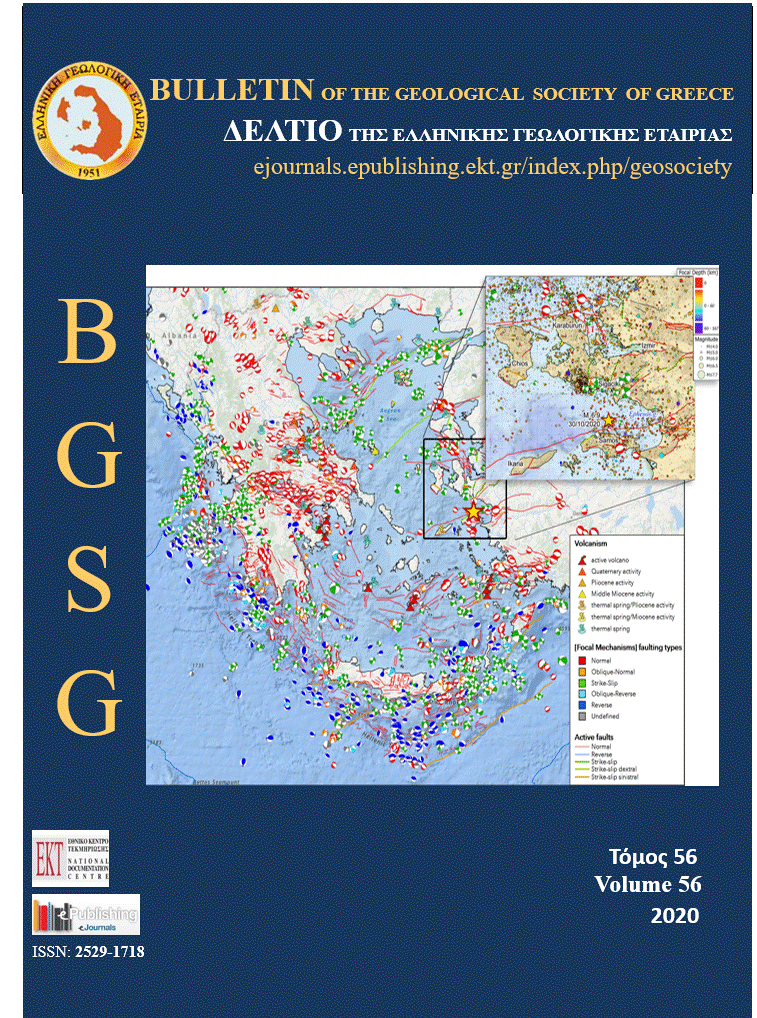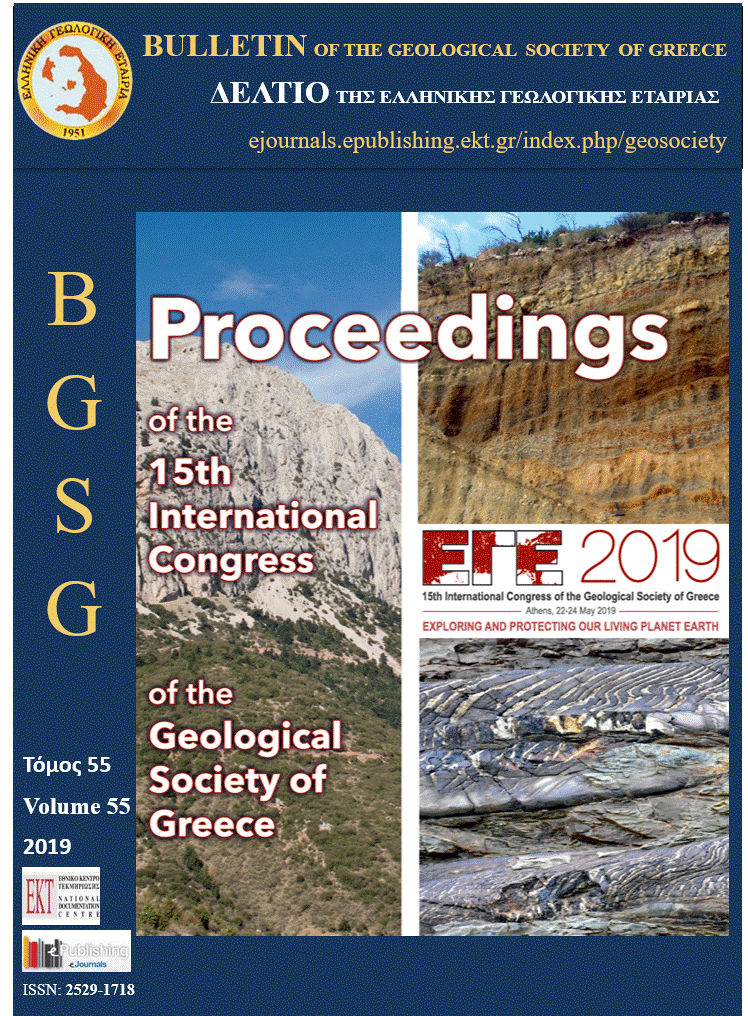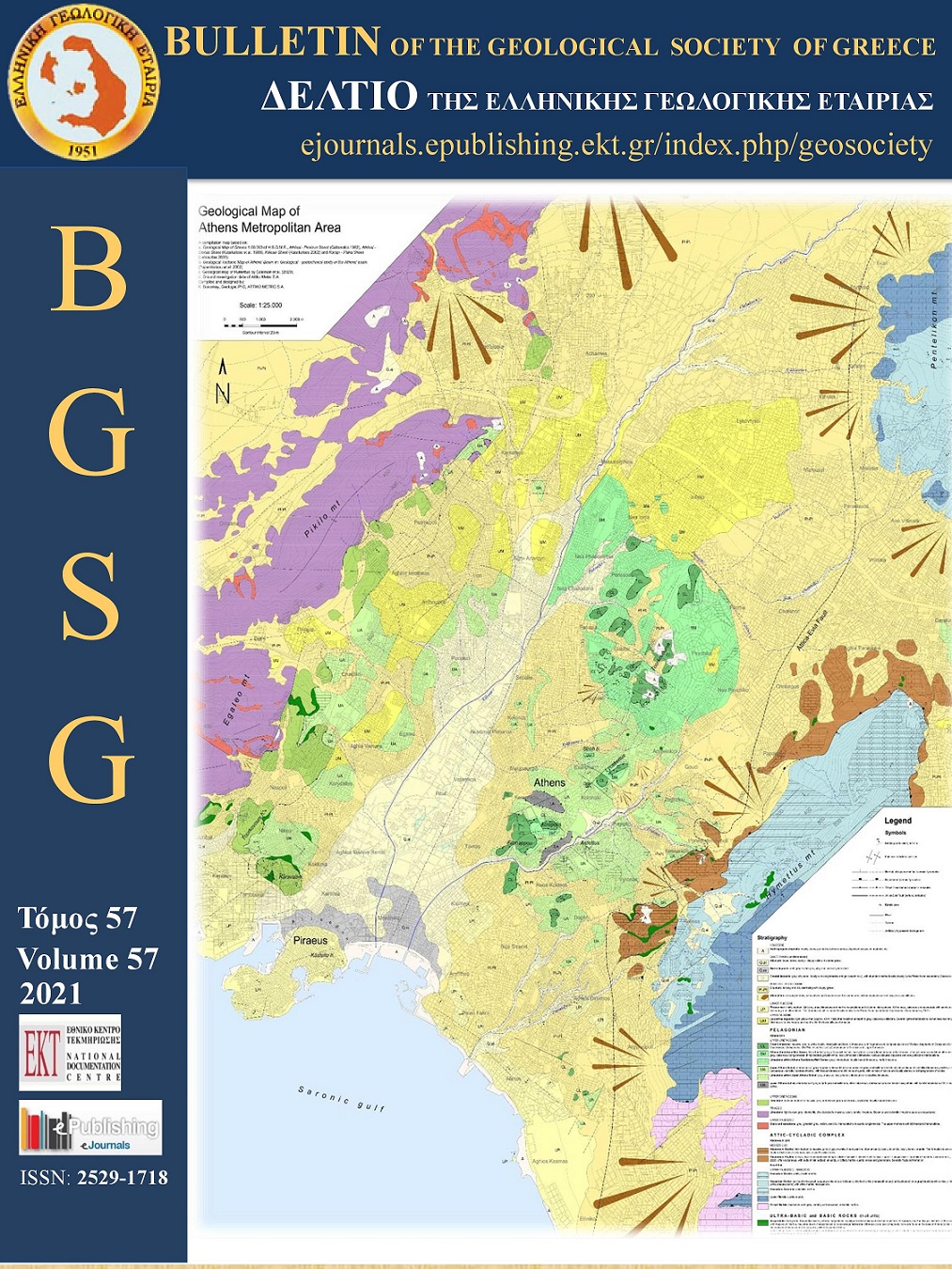Mineralogical and Geochemical Study of the Zeolitized Volcaniclastic Rocks of Petrota region, Evros Prefecture, Northeastern Greece

Abstract
The present work studies the tuffs associated with the volcanic area of the Paleogene Sheinovets caldera, located on the southeastern part of the Rhodope massif, in Bulgaria. Its purpose is to describe the mineralogical and geochemical composition of the zeolitized volcaniclastic deposits in the broader area of Petrota village, in the northwesternmost part of the Greek regional unit of Evros, in northeast Greece. The samples studied in this work were collected from seven (7) different locations, covering an area of almost 4 km in length and 2 km in width. Macroscopically, the samples display a greyish-green hue and they are widespread in the area of study. They often contain fragments of the crystalline metamorphic basement (mica-schists, phyllites, amphibolites, quartzites) and/or rhyolitic clasts. A rhyolitic outcrop of greyish-pink hue is observed in the Mavri Petra region, probably related to the Rupelian acid volcanism that occurred in the Sheinovets caldera. The mineralogy of the tuffs was studied under light polarizing microscope and using Scanning Electron Microscopy (SEM), and it was further confirmed by X-ray powder diffraction (XRPD) method. The initial matrix of the tuffs consisted predominantly of glass shards that are now partly or fully altered into zeolites and clay minerals, such as celadonite, displaying characteristic pseudomorphic structures. The dominant zeolite is clinoptilolite, while in some areas the presence of mordenite is also noticed. Feldspar phenocrysts are abundant, and they are represented by plagioclase and sanidine. Although quartz crystals can be observed under light-polarizing microscope solely in metamorphic fragments, the presence of silica polymorphs was also confirmed through SEM and XRPD analysis, with quartz and cristobalite prevailing. The mineralogical assemblage includes phenocrysts of biotite and in some cases amphiboles, while pyroxene, epidote, garnet, titanite, apatite, zircon, ilmenite, magnetite and rutile are additional minerals which have been identified locally in accessory quantities. Chemical analysis was carried out for major and trace elements, using the X-ray fluorescence (XRF) method and 4 Acid digestion ICP-MS analysis, respectively. The samples of Mavri Petra region, exhibit high concentrations in Cu, Pb, Mn, V, P and W. The analyzed concentrations of U in the area of Palaeokklisi are relatively high in comparison to the rest due to its proximity to a fault. Towards the northwestern study area, close to the Greek-Bulgarian border, the concentrations of Sr appear to be particularly high, probably because the area is closer to the volcanic centre.
Article Details
- How to Cite
-
Michailidou, E., Vavelidis, M., Papadopoulou, L., & Kantiranis, N. (2020). Mineralogical and Geochemical Study of the Zeolitized Volcaniclastic Rocks of Petrota region, Evros Prefecture, Northeastern Greece. Bulletin of the Geological Society of Greece, 56(1), 17–38. https://doi.org/10.12681/bgsg.20946
- Issue
- Vol. 56 No. 1 (2020)
- Section
- Mineralogy-Petrology-Geochemistry-Economic Geology

This work is licensed under a Creative Commons Attribution-NonCommercial 4.0 International License.
Authors who publish with this journal agree to the following terms:
Authors retain copyright and grant the journal right of first publication with the work simultaneously licensed under a Creative Commons Attribution Non-Commercial License that allows others to share the work with an acknowledgement of the work's authorship and initial publication in this journal.
Authors are able to enter into separate, additional contractual arrangements for the non-exclusive distribution of the journal's published version of the work (e.g. post it to an institutional repository or publish it in a book), with an acknowledgement of its initial publication in this journal. Authors are permitted and encouraged to post their work online (preferably in institutional repositories or on their website) prior to and during the submission process, as it can lead to productive exchanges, as well as earlier and greater citation of published work.




